Before deciding if you want – or need – the CMOY Headphone Amplifier, there is something any buyer should ask themselves: Why do you want one? Seriously, this is important, because many people will buy a headphone amp for all the wrong reasons. Consider this: If you want an amp to make your music louder and more “head-banging,” save your money – and your hearing. That’s not the purpose of an amp. Sure, the volume will be louder – heck, it should be louder – but the true purpose of any headphone amp is to make music sound better at all volumes. It’s not just about volume; it’s about quality.
And that brings us to two kinds of quality: hardware and audio. Let’s deal with the hardware first. The CMOY Amp is a do-it-yourself (DIY) amp kit for people who can’t – or won’t – assemble electronics. That would be moi. This CMOY amp is already assembled and ready to use. It comes (literally) in an Altoids Peppermint tin – well, mine did. There is actually a choice of 6 different tins to choose from. I didn’t have a choice of tin for this review, but peppermint is the one I would have picked anyway, so it’s all cool (the amp, not the mints).
The tin is well constructed, and when opened, reveals the amp’s circuit board connected to a standard 9-volt battery. I’m no electronics person, but the board looks small and not too complicated. It also generated no heat that I could detect.
Here are some specs for those who understand such things:
- Alps Volume control with built in twist-on/off switch
- Burr Brown OPA 2134 amp.
- 8 pin DIP socket allowing for other op amps to be used
- Metal film resistors
- Polyester low noise Film Capacitors.
- Molded battery connector
- 3.5mm PCB Audio Input and Output Jacks.
- Rail Splitter chips for stable power supply
The board is attached with double-stick foam tape. There are three holes drilled into one end of the tin for input, output and an on/off volume switch. To operate, just connect any audio source (I used an iPod Classic) to the input slot using a mini plug. Then plug any headphone or earphone into the output slot with a second mini plug cable. That’s it. Adjust the volume and you’re good to go. Note: Good luck figuring out which port is input and output. They’re not labeled on the outside of the tin. Input/output is marked in tiny letters on the circuit board itself.
So, how good is the going using the CMOY amp? Not bad, especially when you factor in that it’s less than $30. An important thing to consider is that this amp does not include a digital audio converter (DAC). An included DAC would make this a killer product, but the price would rise accordingly. As it is, when the amp is used with any iPod, iPhone or other smart phones, a DAC isn’t entirely necessary. Here’s why: iDevices have pretty good DACs built right in. In fact, some iPod models have great DACs, but that’s another story. However the amps on these devices are generally weak. This can be a problem using some larger headphones (less so with earphones) resulting in lower overall volume. The CMOY amp provides enough power to properly drive these more difficult headphones.
Before I go further, let me explain what CMOY means: it stands for Chu Moy, the person largely responsible for the “Let’s turn Altoids tins into headphone amps craze.” Now you know.
How improved the musical experience is largely depends on how good the source is. If used with an iPod or similar device, you will be pleased with the result, because of the better DACs those devices already have. Use it with an iMac or other computer/laptop with their lousy DACs, and all you’ll do is just turn bad audio into louder bad audio.
With my iPod Classic, the sound was louder (of course), but it was also a bit more defined – if not refined – and punchier. Since I didn’t have to crank the volume up to achieve decent loudness, it allowed a little more dynamic range to be heard. This simply means that when I adjusted the volume for the quieter parts, the louder parts had much more authority and presence. That alone makes this amp worth considering, especially when used with those larger headphones.
It didn’t matter what music I sampled, whether it was classic rock, modern mixes, classical, electronica or even (some) hip-hop; the CMOY amp made it have more audible impact to my ears. In fact, this difference can be even more immediate and dramatic than just a DAC upgrade. Volume is visceral.
The CMOY Headphone Amplifier may not be a necessary addition to an iPod or small, portable speaker, but $28 is not much money for an immediately noticeable improvement in audio. Plus, the cool factor (pun intended) of having a portable amp in its own mint tin only adds to the fun.
Available through Amazon.
INIU Mini Portable Charger, Small 45W PD Power Bank, 10000mAh USB C in&Out Fast Charging Pocket Size Battery Pack, Travel Essentials Powerbank for iPhone 17 16 15 14 Pro Air, Xiaomi, Samsung S24 etc
32% OffINIU Portable Charger, Smallest 22.5W 10000mAh Power Bank, USB C in/Output Fast Charging 3-Output Mini Battery Pack Charger with Phone Holder for iPhone 17 16 15 14 Air Samsung S23 Google iPad Tablet
$22.99 (as of 12/31/2025 17:05 GMT -06:00 - More infoProduct prices and availability are accurate as of the date/time indicated and are subject to change. Any price and availability information displayed on [relevant Amazon Site(s), as applicable] at the time of purchase will apply to the purchase of this product.)Product Information
| Price: | $35.99 US |
| Manufacturer: | Lucid Labs |
| Retailer: | Amazon |
| Requirements: |
|
| Pros: |
|
| Cons: |
|

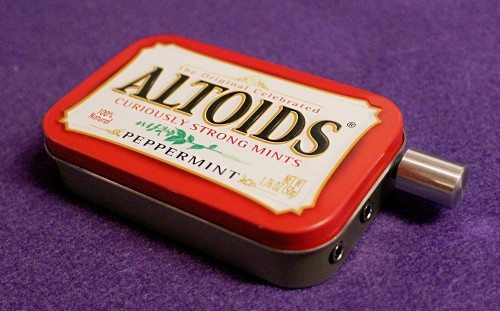
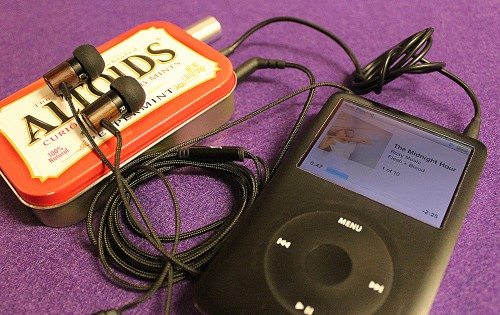
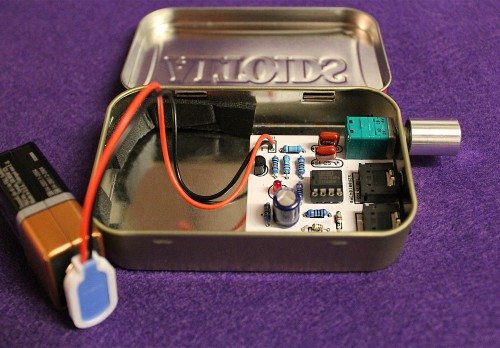
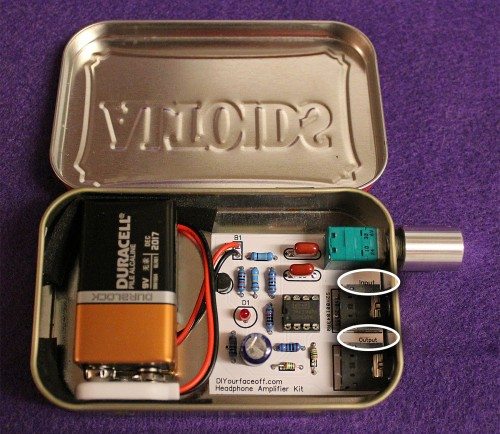
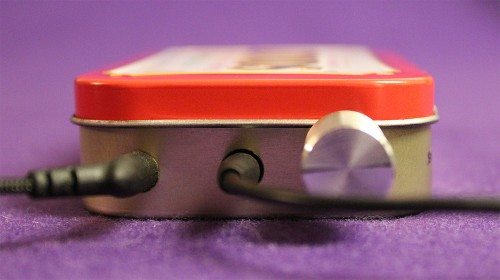
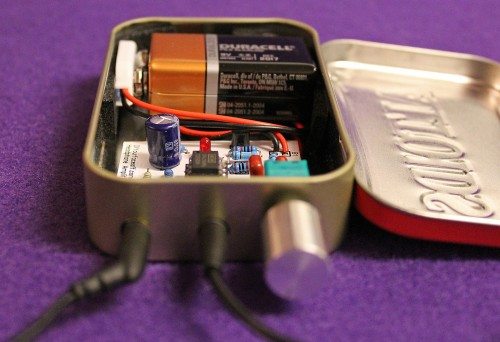
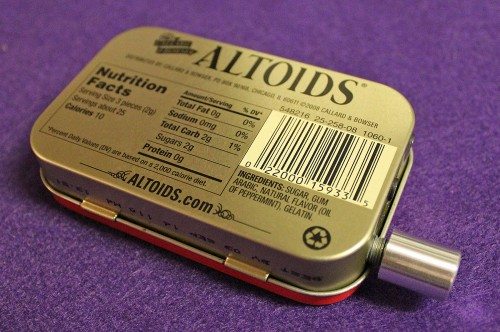


Gadgeteer Comment Policy - Please read before commenting
Nice- I wasn’t aware that you can buy them already “built” !
iWant.
If you where worried about sound quality why would you use an iPod to begin with? Mp3 players condense the music and quality is lost. An amplifier wilk just make crappie mp3 music louder not better sounding.
I highly doubt you can tell the difference between a compressed audio file and uncompressed. And secondly, these amps arent just for increasing the volume, they allow you to run the headphones with adequate power.
Good question, Gabetjones,
When possible, I only play hi-res MP3 files on my iPod. And even that is rare. The vast majority of my music files on my iPod are Apple Lossless, which is my prefered format. I have a 160gb iPod Classic, so I have plenty of space for the larger files.
Bill H.
Maybe someone with an electronics background can answer this question.
How difficult would it be for the electronics of this device be used as a splitter to allow two people to share the sound from an iPad? And then add a second audio output? Or is that a different type of output booster?
I don’t need to increase the volume of my sound, but I do need to let a friend watch a movie with me when we are traveling on trains, planes, and buses.
@Sandee what about this: http://www.zagg.com/ifrogz/accessories/split-audio-splitter-cord/2045 ?
Julie,
I’ve tried that type and it reduces the amount of “signal” going to the headphones.
I have a little portable gizmo that uses a battery to amp up the signal and then split it.
I was just wondering if this thing could have been made to amp up and split.
Ah ok… You could always get one of these devices, then add the splitter. 🙂
Sandee, You could run a splitter off of the output of this device but you need to make sure your headphones don’t have too low of impedance. If you choose two pairs of larger can style headphones you should be fine. Using a splitter will effectively cut the headphone impedance in half though so lower impedance headphones such as earbuds and grado headphones may have a problem if you run a splitter.
is the lm2904 compatible to this amp? thanks…
Ryan,
I don’t understand your question. Could you please explain further?
bill,
my question is, what are the other ic’s that are compatible to this build? … thanks. . other than opa2132… thanks.
I might be nitpicking here, but there are a few issues in this review. DAC actually stands for Digital to Analog Converter, it is a type of IC used in all sorts of electronics which converts a digital signal (binary sequences) to an analogue signal (1-5V for example).
An amplifier which plugs into the headphone jack of a device does not have a DAC because there is no digital signal to convert – it is taking an analogue signal directly from the device which has its own DAC feeding the output jack. The only amplifiers with a DAC will be the type which connect via the USB/PCI bus to your computer or the charge port of your iDevice.
There is nothing inherently advantageous to using a DAC type amplifier as opposed to a straight analogue amplifier unless the device has a low quality DAC which you want to bypass, which is pretty rare these days.
Thanks for the review.
Would you recommend it for my MacBook Air?